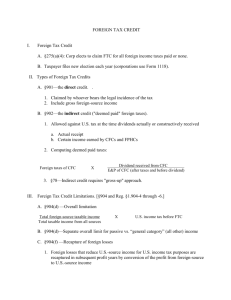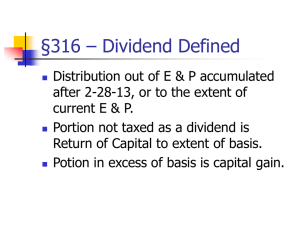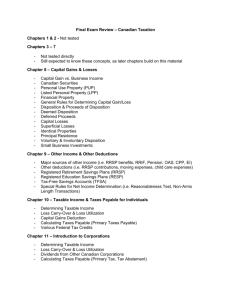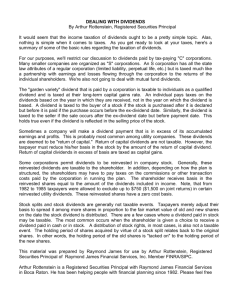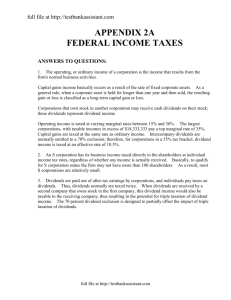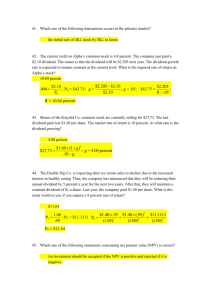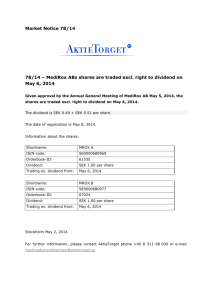US Taxation of International Operations
advertisement
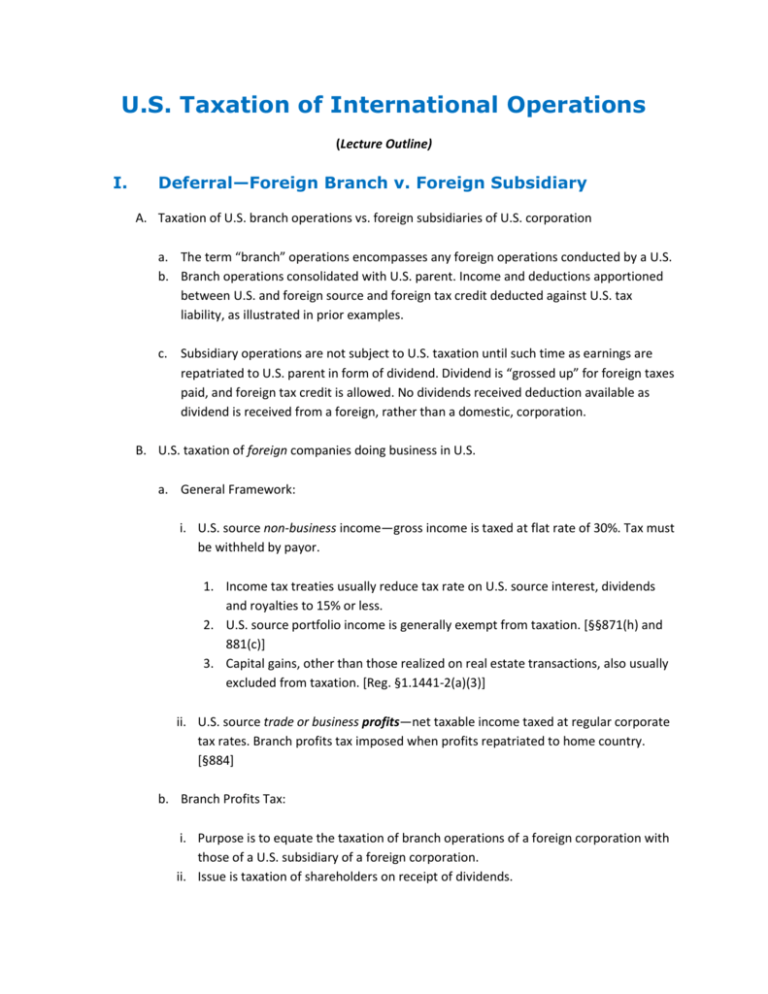
U.S. Taxation of International Operations (Lecture Outline) I. Deferral—Foreign Branch v. Foreign Subsidiary A. Taxation of U.S. branch operations vs. foreign subsidiaries of U.S. corporation a. The term “branch” operations encompasses any foreign operations conducted by a U.S. b. Branch operations consolidated with U.S. parent. Income and deductions apportioned between U.S. and foreign source and foreign tax credit deducted against U.S. tax liability, as illustrated in prior examples. c. Subsidiary operations are not subject to U.S. taxation until such time as earnings are repatriated to U.S. parent in form of dividend. Dividend is “grossed up” for foreign taxes paid, and foreign tax credit is allowed. No dividends received deduction available as dividend is received from a foreign, rather than a domestic, corporation. B. U.S. taxation of foreign companies doing business in U.S. a. General Framework: i. U.S. source non-business income—gross income is taxed at flat rate of 30%. Tax must be withheld by payor. 1. Income tax treaties usually reduce tax rate on U.S. source interest, dividends and royalties to 15% or less. 2. U.S. source portfolio income is generally exempt from taxation. [§§871(h) and 881(c)] 3. Capital gains, other than those realized on real estate transactions, also usually excluded from taxation. [Reg. §1.1441-2(a)(3)] ii. U.S. source trade or business profits—net taxable income taxed at regular corporate tax rates. Branch profits tax imposed when profits repatriated to home country. [§884] b. Branch Profits Tax: i. Purpose is to equate the taxation of branch operations of a foreign corporation with those of a U.S. subsidiary of a foreign corporation. ii. Issue is taxation of shareholders on receipt of dividends. iii. Tax is equal to 30% of “dividend equivalent amount” (subject to treaty reductions) c. Dividend Equivalent Amount: i. Computed by reference to change in branch’s “net equity” amount during the year— reduction in net equity is deemed equivalent to a dividend. ii. “Net equity amount” is equal to aggregate of money plus the adjusted basis of property used by the branch, less the amount of liabilities “connected with” the U.S. trade or business activities of the branch. iii. Liabilities connected with the branch’s U.S. operations are apportioned using same approach used to apportion interest expense, except that asset values are determined at year end, rather than as average over the year. iv. Dividend equivalent cannot exceed accumulated earnings and profits of the branch. d. Branch Interest—interest paid by a U.S. branch of a foreign corporation is treated as U.S. source income to the recipient. Thus, it is subject to withholding tax at 30%. II. Foreign Tax Credit A. Foreign Tax Credit a. §275(a)(4): Corp elects to claim FTC for all foreign income taxes paid or none. b. Taxpayer files new election each year (corporations use Form 1118). B. Types of Foreign Tax Credits a. §901—the direct credit. i. Claimed by whoever bears the legal incidence of the tax ii. Include gross foreign source income C. §902—the indirect credit ("deemed paid" foreign taxes). a. Allowed against U.S. tax at the time dividends actually or constructively received b. Computing deemed paid taxes: Foreign taxes of CFC X Dividend received from CFC E&P of CFC (after taxes and before dividend) D. §78—Dividends are "grossed up" by deemed paid taxes. E. Foreign Tax Credit Limitations. [§904 and Reg. §1.904-4 through -6.] a. §904(d) —Overall limitation Total foreign source taxable income Total taxable income from all sources X U.S. income tax before FTC b. §904(d)—Separate overall limit for passive vs. “general category” (all other) income F. §904(f) —Recapture of foreign losses a. Foreign losses that reduce U.S.-source income for U.S. income tax purposes are recaptured in subsequent profit years by conversion of the profit from foreign-source to U.S.-source income b. §904(f)(1)—Amount of recapture: i. Lesser of: 1) The amount of the overall foreign loss, or 2) 50% of the taxpayer's foreign-source income for tax year unless taxpayer elects to recapture a greater amount ii. Indefinite carryover of unrecaptured overall foreign losses c. Example: D Corporation (U.S.) established a branch in Z country in early Y1. The results of D Corporation's activities for calendar years 1-4 are as follows: Taxable income (U.S.) Taxable income (foreign) Income taxes paid to Z Overall foreign loss Y1-Y4=$45M U.S. income tax for Y4 before FTC = $35M Y1 $50M (10M) -0- Y2 $50M (15M) -0- Y3 $40M (20M) -0- Y4 $60M 40M 12M Foreign Tax Credit Limitation, Y4: $40M (foreign-source income) – [lesser of (50% x $40M or $45M] $100M (worldwide taxable income) U.S. income tax for Y4 after FTC = $35M - $7M = $28M X $35M = $7M
